Conrad Johnson amplifiers |
||
The conrad-johnson design team is committed to adapting the advances from our state-of-the-art pursuits to more affordable offerings accessible to a wider range of music lovers.This resolve is clearly evident in our new range of Classic amplifiers. Borrowing heavily on the technology of our flagship ART amplifier, the Classic amplifiers preserve the distinctive tonal character of individual instruments and voices, with each clearly located within the overall acoustical environment of the original recording. Musical transients are reproduced with realistic impact, but without artificial enhancement. Like their more costly siblings, the Classic amplifiers capture the emotional impact of the live event, never getting between the listener and the musical performance. |
||
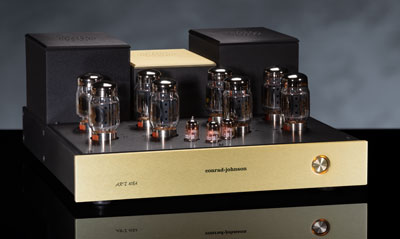 |
Art 108A | The ART108A is a very special amplifier designed for reference quality use by a limited number of discerning audiophiles. No more than 125 pairs of the mono-block ART108A will be produce.The mono ART108A employs four pair of KT88 to produce 160 Watts ample power for the vast majority of applications. CJD Teflon dielectric capacitors are used for coupling the inverter stage to the output stage, and to bypass the large value polypropylene capacitors in the regulated power supplies for the voltage gain and inverter stages. Amplifier output is coupled to speakers through proprietary wide-bandwidth Translinear output transformers optimized for Class A operation of triode connected KT88s. ART108A amplifiers are built without compromise to achieve a new standard in musical performance, and they are built to last. |
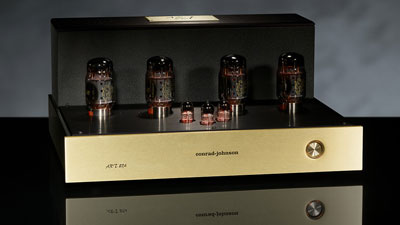 |
Art 27A | The ART27A is available to a limited number of discerning audiophile.Rated at 36 Watts per channel into 4 Ohms, the new conrad-johnson ART27A is an amplifier designed specifically for medium to high efficiency speakers. This approach facilitates design choices that are simply not practical in a high-powered amplifier. |
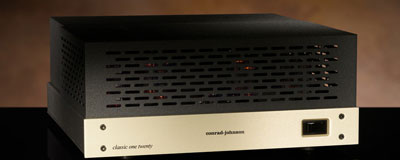 |
Classic 120/120SE |
The base model Classic amplifiers offer an ideal introduction to the joys of modern tube amplifiers, while the ease of use, low maintenance costs, and reliability.Those who wish to take the experience a step further will want to investigate the upgraded Classic One-Twenty SE amplifier. These special edition versions upgrade the output tubes to KT120s and incorporate CJD Teflon Capacitors and ultra high-performance metal foil resistors in strategic applications in the circuit. CL120 &120SE: 125 Watts per channel from 30 Hz to 15 KHz at no more than 1.5 % THD. |
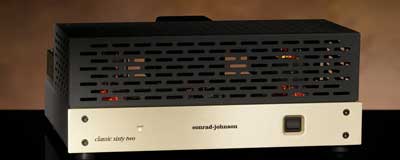 |
Classic 62/62SE |
There really is no mystery to our chosen path to outstanding musical performance: best results come from simple circuits executed with quality parts.Those who wish to take the experience a step further will want to investigate the upgraded Classic Sixty-Two SE amplifier. These special edition versions upgrade the output tubes to KT120s and incorporate CJD Teflon Capacitors and ultra high-performance metal foil resistors in strategic applications in the circuit. CL62 & 62SE: 60 Watts per channel from 30 Hz to 15 KHz at no more than 1.5 % THD. |
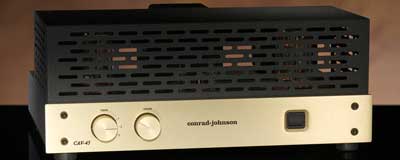 |
CAV 45S2 |
The CAV 45S2 control amplifier represents a distinctly different approach to high-performance home audio. In many ways it is the ultimate embodiment of our design philosophy that simple circuits yield best results.Similar in function to an integrated amplifier, a control amplifier offers the significant potential improvement of eliminating extra connections, external cabling, and inter-device connection considerations that limit conventional audio systems. But the control amplifier also eliminates an entire stage of audio circuitry and its inherent colorations. 45 watts per channel RMS both channels driven into 4 ohms from 30Hz to 15kHz at no more than 1.5% total harmonic or intermodulation distortion. |